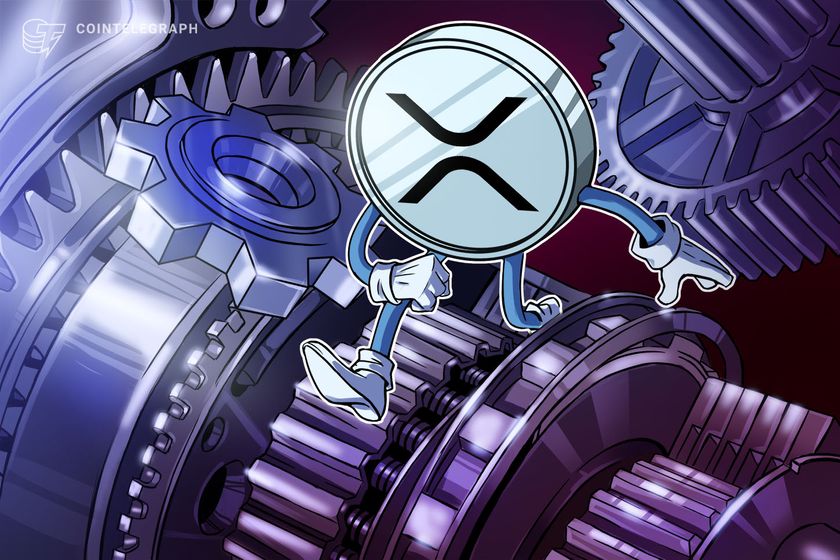Ripple helped build an ecosystem automated market maker protocol in close partnership with the XRP Ledger blockchain community.
3349 Total views
3 Total shares

Own this piece of crypto history
Ripple’s underlying XRPL blockchain is set to unlock a wide range of decentralized finance (DeFi) capabilities following the launch of a natively built automated market maker (AMM) protocol.
Ripple recently announced the release of the XLS-30 AMM protocol, built in partnership with the XRPL community, as a feature to benefit its blockchain ecosystem.
The AMM is expected to expand the DeFi capabilities of the XRPL ecosystem and enable cross-chain DeFi use cases across 50 blockchains.
XRPL’s blockchain ecosystem has an existing decentralized exchange (DEX) featuring a conventional order book, which does not include some of the advanced features that new DeFi protocols have pioneered over the past two years.
Related: Ripple CTO seeks community consensus for XRPL AMM feature adoption
A spokesperson from Ripple told Cointelegraph that the AMM lays the foundation for further DeFi development on the XRPL blockchain.
Integration with cross-chain messaging services like Axelar will broaden the reach and utility of XRPL-based DeFi solutions across several blockchain ecosystems.
The AMM has been in development since June 2022, as Ripple chief technology officer and XRPL co-founder David Schwartz reflected on in a recent X post.

The AMM aims to complement and expand the existing order book system with XRPL. XRPL’s DEX previously operated solely on order books, providing a capital-efficient trading mechanism for highly liquid pairs.
Related: Ripple CTO says ‘tide is turning’ on US regulatory environment
Ripple’s team noted that integrating the AMM with order books complements and expands on the existing DEX-powered ecosystem.
“By integrating the AMM with order books, traders can automatically receive the best price across both systems, while liquidity providers can earn yield on their excess liquidity,” the spokesperson added.
The AMM allows developers to enable the creation of liquidity pools for any pair of assets issued on XRPL. Ripple also confirmed that the AMM was not explicitly targeted at institutional trading entities but that its functionality might prove useful for high-volume traders or firms.
“While the AMM does not currently have built-in compliance features, it complements the existing order book DEX, which may be more suitable for large financial institutions trading popular tokens at high volumes,” the Ripple spokesperson said.
Adding the AMM to the existing order DEX is touted to provide a robust trading environment for a range of users, from retail traders to institutions.
Cointelegraph also understands that Ripple and XRPL are exploring incorporating on-chain regulatory compliance features in an effort to support institutional uptake of its protocol.
The AMM allows developers to enable the creation of liquidity pools for any pair of assets issued on XRPL. Ripple’s team believes that cross-chain messaging protocols will be key in attracting capital, crypto developers and traders from other blockchain ecosystems.
Magazine: 5 dangers to beware when apeing into Solana memecoins


